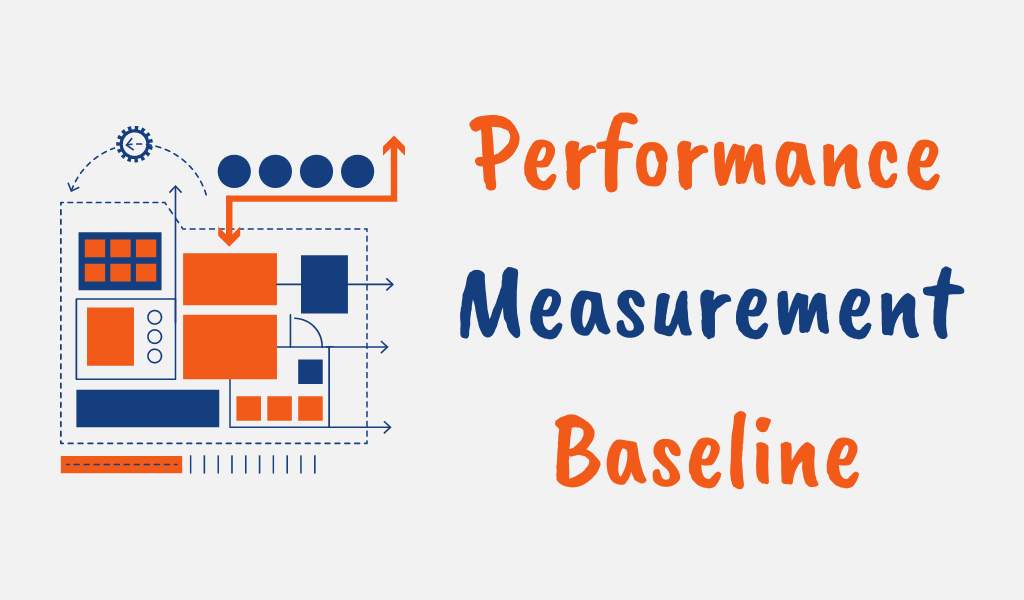When planning your projects, one thing that should be at the back of your mind at all times is that things don’t always go exactly as planned during execution. From experience, they rarely do.
As a project manager, one of your key responsibilities is monitoring the entirety of the project lifecycle to ensure it doesn’t deviate from what has been planned, and taking control measures to get it back on track if it does.
This is where the need for a project performance measurement baseline (PMB) comes in. The PMB enables you to gain insights into the performance of your project and know when the project deviates from the agreed scope, time, and budget constraints.
The PMB provides a window into your project, allowing early identification of project performance variances. Without having this knowledge, the project basically proceeds without insight, and this is as risky as it gets in project management.
This article provides detailed insights into the project baselines, their purposes and benefits, and how they are set. This comes in handy for managing your projects and PMP exam preparation as this knowledge is vital to success.
What is a Baseline in Project Management?
A baseline in project management refers to a fixed reference point against which the actual performance of the project is compared. It is a fixed schedule, scope, and cost of a project at a particular point in time that has been approved and locked down.
The purpose of establishing baselines is to measure project performance, as they provide a benchmark against which performance is gauged. This is crucial in understanding project health and making informed decisions.
Types of Baselines in Project Management
There are typically three main types of baselines in project management. These are scope, schedule, and cost baselines.
Each of these baselines is established during the planning phase of a project and can only be changed through formal change control procedures.
This ensures that the project remains controlled and that stakeholders have a clear understanding of what the project is expected to deliver, when, and at what cost.
1. Scope Baseline
The scope baseline is essentially what needs to be accomplished in your project. It is a combination of the project scope statement, work breakdown structure (WBS), and the WBS dictionary.
The project scope statement includes the project justification, objectives, deliverables, and product acceptance criteria. The WBS breaks down the deliverables into smaller, more manageable components. While the WBS dictionary then provides detailed descriptions of each component in the WBS.
2. Schedule Baseline
The schedule baseline is the approved version of your project schedule and is used as a reference point to compare with the actual project schedule as the project progresses.
It documents the planned start and end date of each project activity and also shows the sequence and dependencies of these activities. The project’s duration, milestones, and critical path are also part of the schedule baseline.
3. Cost Baseline
The cost baseline is the approved budget for your project. It includes all approved changes and is used to measure and monitor cost performance throughout the project.
It’s often displayed as an S-curve, with cumulative cost plotted against time. The cost baseline helps you as a project manager to identify cost variances and assess whether your project is over or under budget.

Performance Measurement Baseline (PMB) Definition
The Performance Measurement Baseline (PMB) in project management is an integration of the scope, schedule, and cost performance baselines and is used to measure and assess overall project performance.
The PMB is a formal, approved plan that is used to compare your actual project performance against planned performance throughout the life of the project allowing you to monitor progress, identify variances, and take corrective actions as necessary.
It’s also used to forecast future performance based on current work performance data. By serving as a reference point, PMB helps ensure your project stays on track and within budget, contributing to successful project completion.
Naturally, the accuracy of your data is a major factor in determining the efficacy of the performance measurement baseline.
What is the Purpose of the Performance Measurement Baseline?
A Performance Measurement Baseline (PMB) is vital in managing, monitoring, and controlling project performance, helping to ensure that projects are completed on time, within budget, and meet their objectives.
The purpose of a PMB includes:
- Project Monitoring: It helps in monitoring the progress of a project by comparing the actual work done and costs incurred to the planned values.
- Control and Decision-Making: Deviations between the actual performance and the PMB can provide early signals of potential project risks or issues. This information can be used to make informed decisions about corrective actions or changes needed.
- Communication: It provides a clear, agreed-upon benchmark that can be communicated to project stakeholders. This helps in setting expectations and providing status updates.
- Performance Evaluation: It enables project performance evaluation by measuring efficiency and productivity. This is crucial for assessing your project’s success and lessons learned for future projects.

Benefits of a Performance Measurement Baseline in Project Management
There are lots of benefits derived from the use of project baselines and the performance measurement baseline in project management. Some of these are:
- Improved Project Control: PMB provides a benchmark against which the performance of the project can be measured. By comparing the actual results of your project with the baseline, you can detect deviations early and take corrective actions.
- Enhanced Forecasting: As a project manager. by reviewing and analyzing the current performance trends of your project against the baseline, you can forecast the future performance of the project. This aids in proactive decision-making and risk management.
- Better Stakeholder Communication: As much as 57% of projects fail as a result of communication breakdown according to this study. The PMB can be used as a communication tool with stakeholders to provide a clear picture of what is planned, which can help in setting and managing stakeholder expectations.
- Increased Accountability: With a defined baseline, all project team members have clear visibility into what needs to be achieved which promotes accountability and can lead to improved performance.
- Resource Optimization: A PMB can help identify where resources are being overused or underused. This can inform decisions about resource allocation, potentially leading to cost savings and improved efficiency.
- Less Scope Creep: A well-defined PMB is very useful in managing and controlling changes to the project, and helps in preventing scope creep where the project’s scope gradually expands beyond its original objectives.

How to Create a Performance Measurement Baseline
Creating a Performance Measurement Baseline (PMB) is an important task in project management that helps ensure project tasks are being completed on time and within budget.
The PMB combines the scope, schedule, and cost baselines to provide a comprehensive view of project performance.
Here’s a step-by-step guide on how to create a PMB:
1. Develop the Scope Baseline
The scope baseline is the first step in creating a PMB. This is a detailed description of what the project is supposed to accomplish and the work needed to deliver it. It includes the project scope statement, the Work Breakdown Structure (WBS), and the WBS dictionary.
- Project Scope Statement: This is a detailed description of the project’s objectives, deliverables, and outcomes. It also includes project boundaries, constraints, and assumptions.
- Work Breakdown Structure (WBS): This is a hierarchical decomposition of the total scope of work to be carried out by the project team to accomplish the project objectives and create the required deliverables. It breaks down the work into manageable chunks.
- WBS Dictionary: This provides a detailed description of the work to be performed for each work package in the WBS.
2. Develop the Schedule Baseline
Once the scope baseline is clearly defined and the work has been broken down into manageable pieces, the next step is to develop the schedule baseline.
This involves identifying all the activities required to complete the work packages, estimating the time that each activity will take, and sequencing them in the right order.
Various scheduling tools, such as Gantt charts or network diagrams, can be used in this process. The result is the project schedule, which shows when each activity should start and finish.
3. Develop the Cost Baseline
The cost baseline is the approved budget for the project. To develop the cost baseline, you need to estimate the costs for each activity in the schedule. This includes labor costs, material costs, equipment costs, and any other costs associated with the project.
Once all costs are estimated, they are aggregated to form the cost baseline. Often, this is represented as a cost S-curve, showing the cumulative project budget over time.
4. Integrate the Three Baselines to Form the PMB
Once the scope, schedule, and cost baselines have been established, they are integrated to form the PMB. This provides a consolidated view of what the project should deliver (scope), when it should be delivered (schedule), and how much it should cost (cost).

Can a Performance Measurement Baseline Be Changed?
While a performance measurement baseline (PMB) can be changed, this generally happens only under specific circumstances such as when the project scope shifts or unforeseen challenges arise.
Altering the PMB requires a formal change control process to ensure that changes are managed systematically. This process involves requesting, reviewing, and approving the change.
After approval, the PMB is updated to reflect the new realities of the project. However, frequent changes to the PMB can be a sign of poor project planning or management and can disrupt the project’s flow and stakeholder expectations.
Therefore, changes to the PMB should be kept to a minimum and only done when absolutely necessary.
Conclusion
As a project manager, working without defined targets is often a recipe for project failure. A performance measurable baseline outlines what you expect to achieve, when you expect it achieved, and what it will cost at each stage of the project.
Once the PMB is established, the project’s actual performance can be measured against it using Earned Value Management (EVM) techniques to provide quantitative data on project performance and enable you to identify variances from the baseline and take corrective action if necessary to minimize the project risks.
Remember, any changes to the scope, schedule, or cost baselines should be controlled through a formal change control process. This ensures that the PMB remains a valid reference point for measuring performance throughout the project lifecycle.





